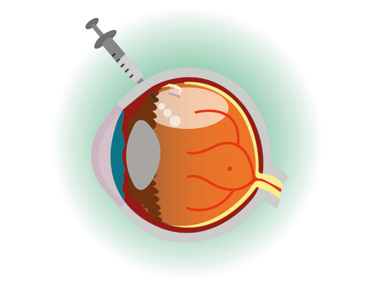
1. Pick the right patient
- With PR, the patient is your cosurgeon, and you need to make sure they have the physical and mental capacity to perform postop positioning.
2. Pick the right eye
- Make every effort to assess the vitreoretinal interface, find all the breaks and regions of subretinal fluid accumulation (a three mirror lens may help), note lens status and chamber depth.
- Multiple breaks or extensive lattice degeneration suggest an abnormal vitreoretinal interface. If the fellow eye has a giant tear, PR might not be a good idea.
- Ideally, the break should not extend below the horizontal.
3. Pre-op prep and anesthesia
- Subconjunctival anesthesia is usually adequate, and I do all the procedures in my office.
4. Immediate cryo vs. deferred laser
- Avoid excessive cryotherapy.
- If the break is highly elevated, inject the gas, position the patient, and apply laser the next day.
5. Paracentesis
- Perform a paracentesis prior to gas injection, with a 30 G needle on a plungerless syringe. This helps avoid issues like hard eye, pain, iris incarceration, arterial occlusion and displacement of the bubble into the anterior chamber.
6. Gas selection
- Use a half cc of 100% SF6, but consider C3F8 if the eye is large, the break is posterior, or if multiple breaks are present.
7. Injection technique
- I inject using a one cc syringe with a 32 G needle, with the exact amount of gas I plan to inject preloaded in the barrel of the syringe.
- With the patient supine, I inject the gas into the superior temporal quadrant, away from large breaks.
- The injection is made perpendicular to the eye wall, and the needle is inserted about 4 mm into the eye.
- To avoid subretinal gas, never inject inferiorly.
8. Steamroller
- The streamroller maneuver is used to debulk subretinal fluid, by rolling the bubble towards the break, pushing subretinal fluid back into the vitreous cavity.
- It is performed to prevent displacement of subretinal fluid into the detached macula, or into flat inferior breaks.
9. Positioning
- Proper patient positioning is crucial to success.
- I use the Tornambe Pneumo Level (Escalon) on the patch to aid positioning.
- Some patients don’t listen, so in these cases make sure a family member knows how to position the patient.
10. Postop care
- I prescribe a steroid-antibiotic combination for five days, and I position as much as the patient can tolerate for the first 24 hours – and I always see the patient the next day.
- Inferior subretinal fluid not involving the macula may be managed conservatively, because in some cases it may take weeks to resolve.
- If the macula is still detached after a few days, the break is open or there is an unrecognized break, I usually go directly to vitrectomy – do not delay the rescue operation.
- In my experience if minimal cryo is used and the patient is reoperated upon promptly, failed cases do well.
I spent seven years as a medical writer, writing primary and review manuscripts, congress presentations and marketing materials for numerous – and mostly German – pharmaceutical companies. Prior to my adventures in medical communications, I was a Wellcome Trust PhD student at the University of Edinburgh.













